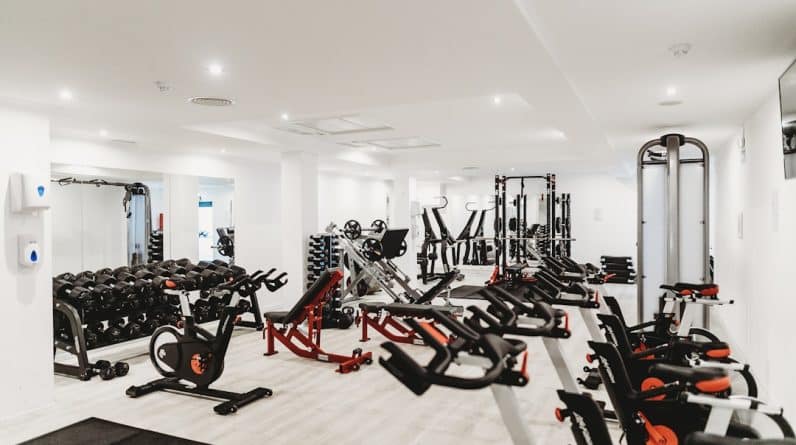
In today’s fast-paced world, maintaining a healthy lifestyle can often feel overwhelming. Fortunately, the Health app on your smartphone serves as a powerful ally in your quest for wellness. This app is designed to help you monitor various aspects of your health, including physical activity, nutrition, and sleep patterns.
By centralizing this information, you can gain valuable insights into your habits and make informed decisions about your health journey. The user-friendly interface allows you to navigate through different features seamlessly, making it easier for you to stay on track. As you delve deeper into the Health app, you’ll discover that it offers a plethora of functionalities tailored to meet your individual needs.
From tracking your daily steps to logging workouts and monitoring heart rate, the app provides a comprehensive overview of your health metrics. Understanding how to utilize these features effectively can empower you to take charge of your fitness goals. Whether you are a seasoned athlete or just starting your fitness journey, the Health app can be customized to suit your preferences and lifestyle, ensuring that you have the tools necessary to succeed.
Key Takeaways
- Health apps help users track and manage their fitness and wellness goals
- Logging a workout involves recording the type, duration, and intensity of the exercise
- Choosing the right workout type is important for accurate tracking and goal setting
- Inputting workout details such as distance, sets, and reps helps in monitoring progress
- Tracking progress and setting goals within the app keeps users motivated and on track
Logging a Workout
Logging a workout in the Health app is a straightforward process that can significantly enhance your fitness experience. To begin, you simply need to navigate to the workout section of the app. Here, you will find an option to add a new workout.
This feature allows you to document various types of physical activities, from running and cycling to yoga and strength training. By logging your workouts, you not only keep a record of your physical activity but also gain insights into your performance over time. Once you’ve selected the type of workout you want to log, the app prompts you to enter additional details such as duration, distance, and calories burned.
This information is crucial as it helps you track your progress and adjust your fitness routine accordingly. Moreover, logging workouts consistently can motivate you to push yourself further, as you can visually see how much you’ve accomplished. The satisfaction of watching your progress unfold can be a powerful motivator in maintaining a regular exercise regimen.
Choosing the Right Workout Type

Selecting the appropriate workout type is essential for maximizing the benefits of your exercise routine. The Health app offers a diverse range of workout categories, allowing you to choose activities that align with your fitness goals and interests. Whether you’re looking to build strength, improve endurance, or enhance flexibility, there’s a workout type that suits your needs.
By choosing the right category, you ensure that the data logged is relevant and useful for tracking your progress. When deciding on a workout type, consider what activities you enjoy most. Engaging in exercises that you find enjoyable increases the likelihood of sticking with them long-term.
For instance, if you love dancing, logging Zumba or dance workouts can make exercising feel less like a chore and more like a fun activity. On the other hand, if you’re focused on building muscle, selecting strength training as your workout type will provide more accurate data for tracking your gains. Ultimately, the key is to find a balance between enjoyment and effectiveness in your workout choices.
Inputting Workout Details
Once you’ve chosen the right workout type, it’s time to input the details into the Health app. This step is crucial for ensuring that your logged workouts are accurate and meaningful. You’ll typically be prompted to enter information such as the duration of your workout, the distance covered (if applicable), and any other relevant metrics like heart rate or calories burned.
Taking the time to fill in these details can provide you with a clearer picture of your fitness journey. Additionally, many users find it helpful to include notes about their workouts. For example, if you tried a new exercise or felt particularly strong during a session, jotting down these observations can help you identify patterns in your performance over time.
This reflective practice not only enhances your understanding of what works best for you but also allows for adjustments in future workouts. By being diligent about inputting workout details, you’re setting yourself up for success in achieving your fitness goals.
Tracking Progress and Goals
One of the most rewarding aspects of using the Health app is the ability to track your progress over time. As you log workouts consistently, you’ll start to see trends in your performance that can inform your future training decisions. The app provides visual representations of your data through graphs and charts, making it easy for you to assess how far you’ve come.
This visual feedback can be incredibly motivating, especially when you hit milestones or surpass personal bests. Setting specific fitness goals within the app can further enhance your experience. Whether you’re aiming to run a certain distance or complete a specific number of workouts each week, having clear objectives gives you something tangible to strive for.
The Health app allows you to monitor these goals closely and adjust them as needed based on your progress. By regularly reviewing your achievements and challenges, you can maintain focus and stay committed to your fitness journey.
Integrating with Wearable Devices

To take full advantage of the Health app’s capabilities, consider integrating it with wearable devices such as smartwatches or fitness trackers. These devices can provide real-time data on various metrics like heart rate, steps taken, and calories burned during workouts. By syncing this information with the Health app, you create a comprehensive overview of your health and fitness data in one place.
The integration process is typically straightforward; most wearable devices have built-in compatibility with the Health app. Once connected, you’ll find that tracking workouts becomes even more seamless. For instance, if you’re out for a run, your smartwatch can automatically log the distance and pace without requiring manual input from you.
This convenience allows you to focus on your workout rather than worrying about recording data mid-session.
Troubleshooting Common Issues
While using the Health app can be an enriching experience, you may encounter some common issues along the way. One frequent problem users face is difficulty syncing data between their wearable devices and the app. If you find that your workouts aren’t being logged correctly or that certain metrics are missing, it’s essential to check the connection settings on both devices.
Ensuring that Bluetooth is enabled and that both devices are updated with the latest software can often resolve these issues. Another common challenge is entering workout details accurately. If you’re unsure about how to input specific metrics or if certain options seem unavailable, consulting the app’s help section or user guides can provide clarity.
Additionally, reaching out to customer support for assistance can help troubleshoot any persistent problems you may encounter while using the app.
Tips for Making the Most of Health’s Workout Logging Feature
To truly maximize the benefits of the Health app’s workout logging feature, consider implementing a few strategic tips into your routine. First and foremost, consistency is key; make it a habit to log your workouts immediately after completing them. This practice not only ensures accuracy but also reinforces accountability in your fitness journey.
Another effective strategy is to set reminders for yourself within the app or on your device’s calendar. These reminders can prompt you to log workouts regularly or even encourage you to get moving if you’ve been inactive for too long. Additionally, consider sharing your progress with friends or joining online communities focused on fitness; this social aspect can provide motivation and support as you work towards achieving your goals.
Lastly, don’t hesitate to explore all features offered by the Health app beyond just workout logging. Take advantage of its nutrition tracking capabilities or sleep monitoring features to gain a holistic view of your health. By integrating various aspects of wellness into one platform, you’ll be better equipped to make informed decisions that positively impact your overall well-being.
In conclusion, utilizing the Health app effectively can transform how you approach fitness and wellness. By understanding its features and functionalities—from logging workouts to tracking progress—you empower yourself on this journey toward better health. Embrace technology as an ally in achieving your fitness goals and enjoy the process along the way!
If you’re looking to enhance your workout routine, you may want to consider incorporating flexibility and mobility training. This article on





